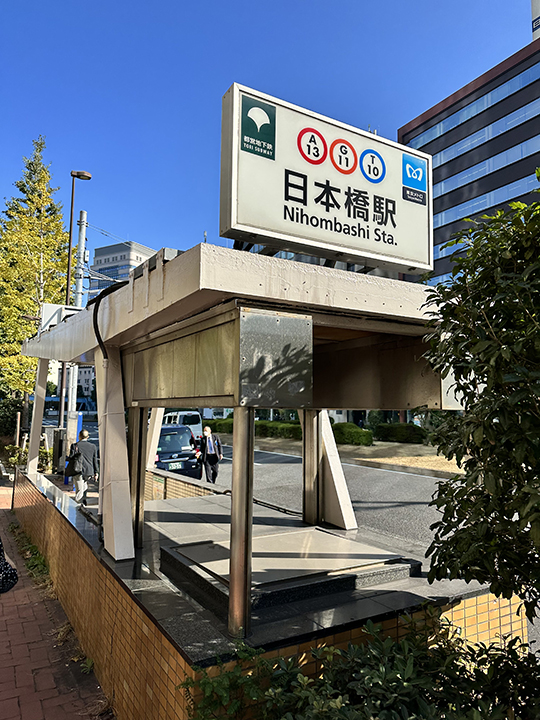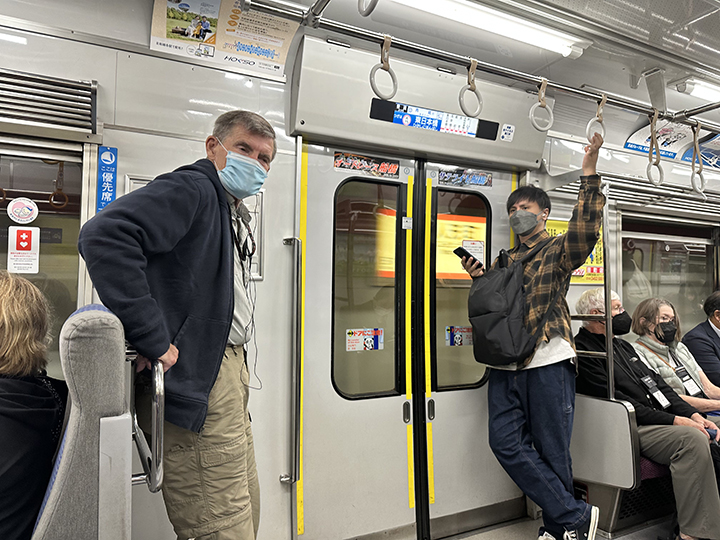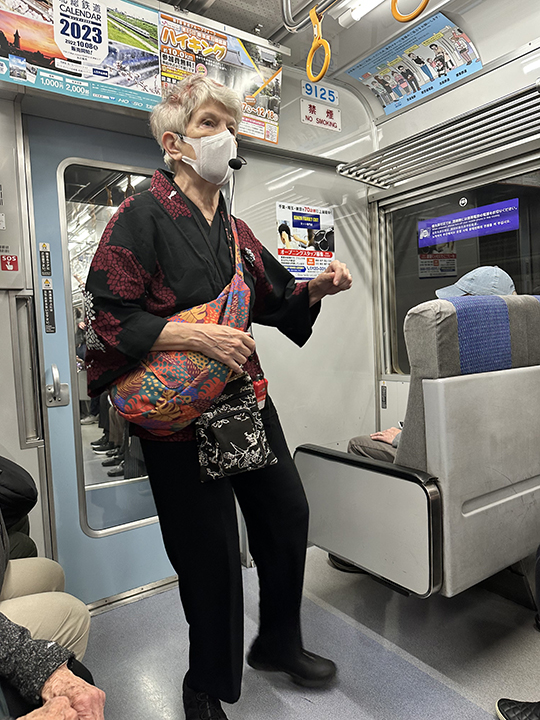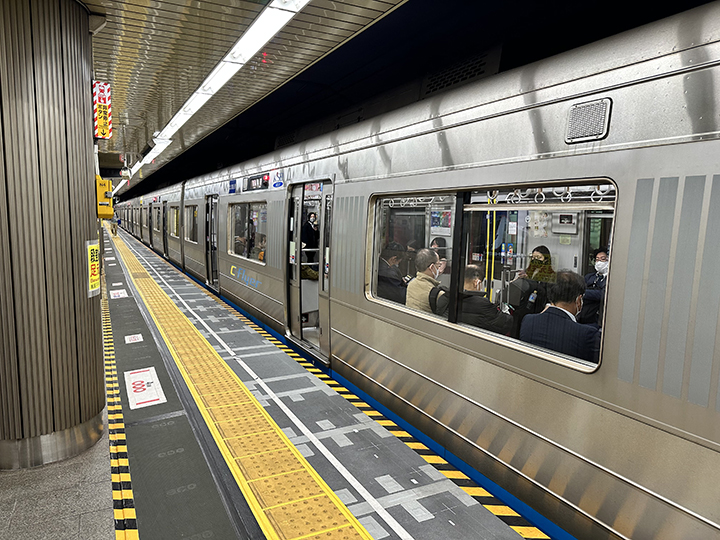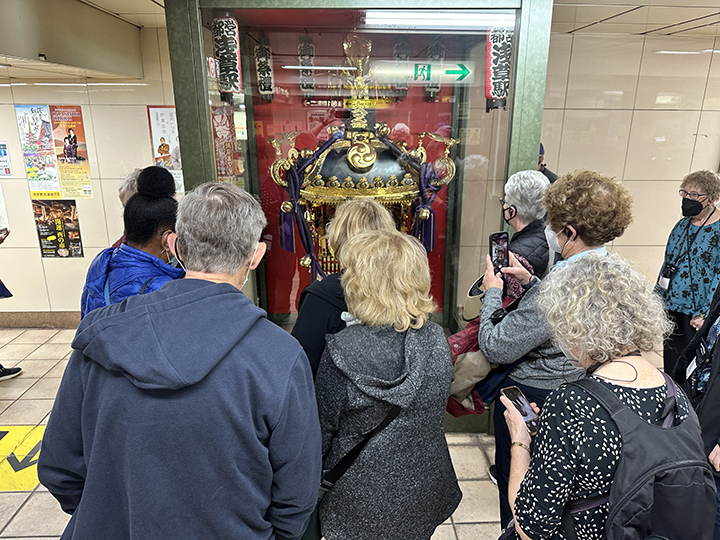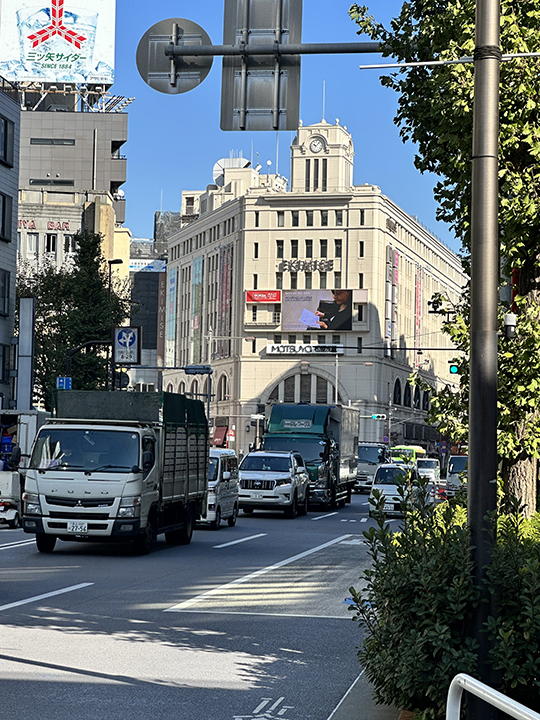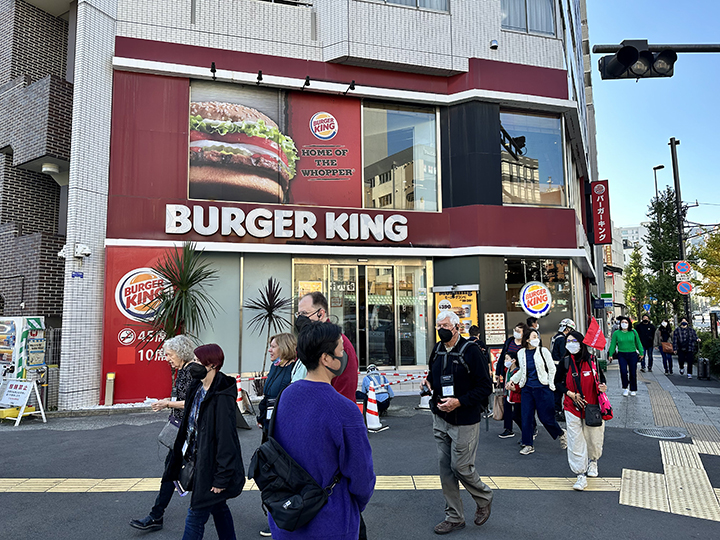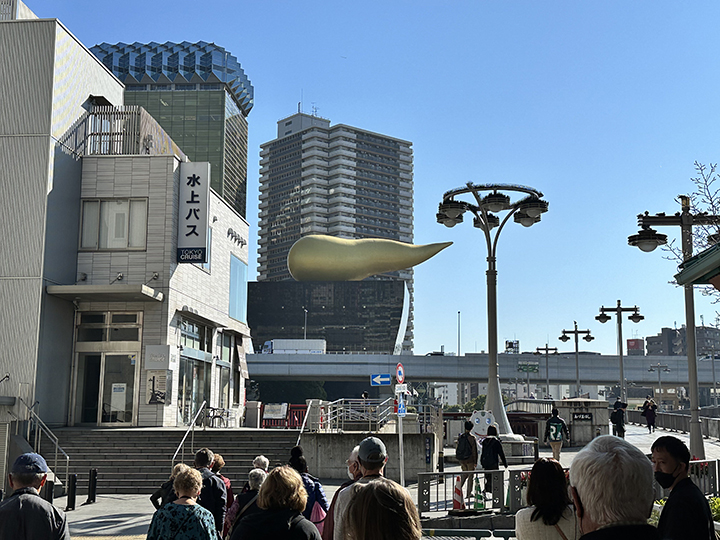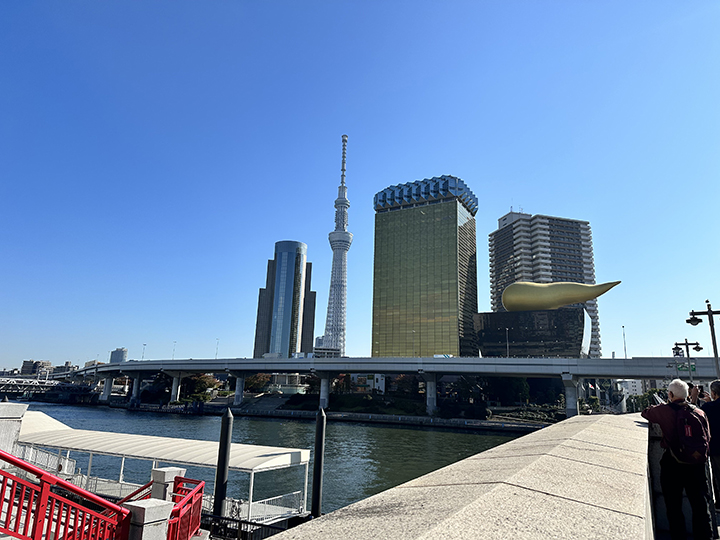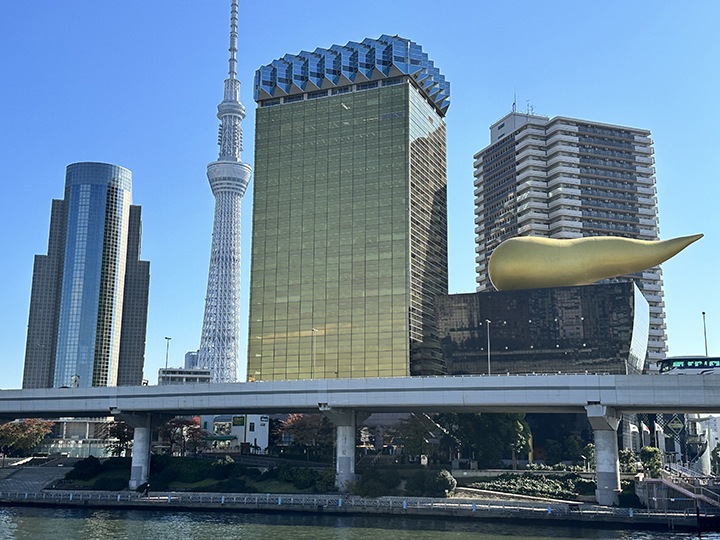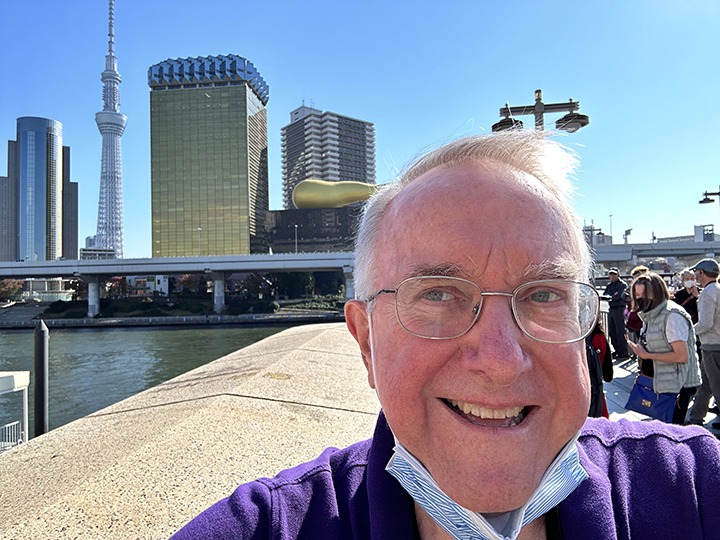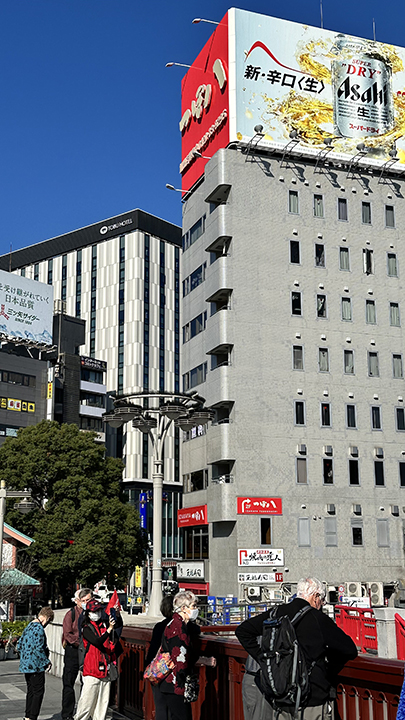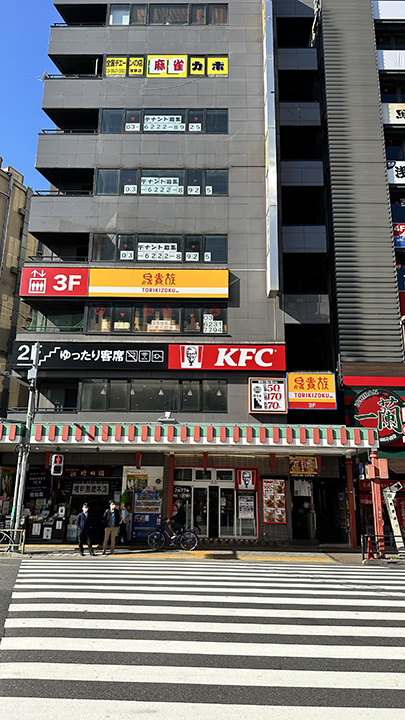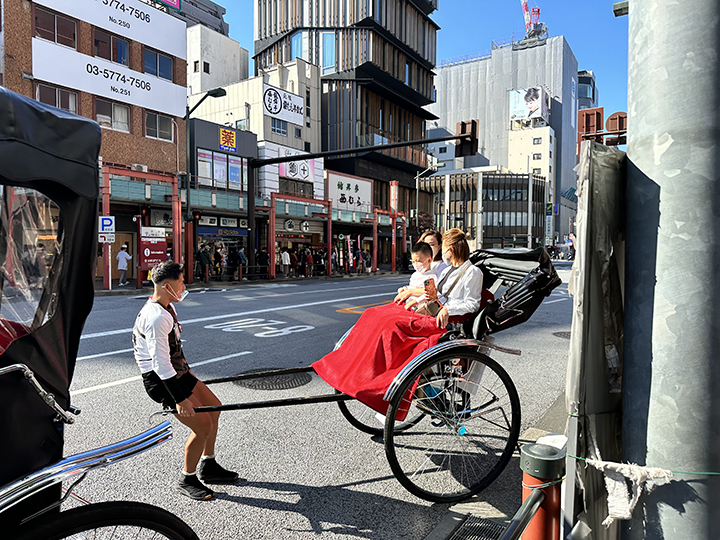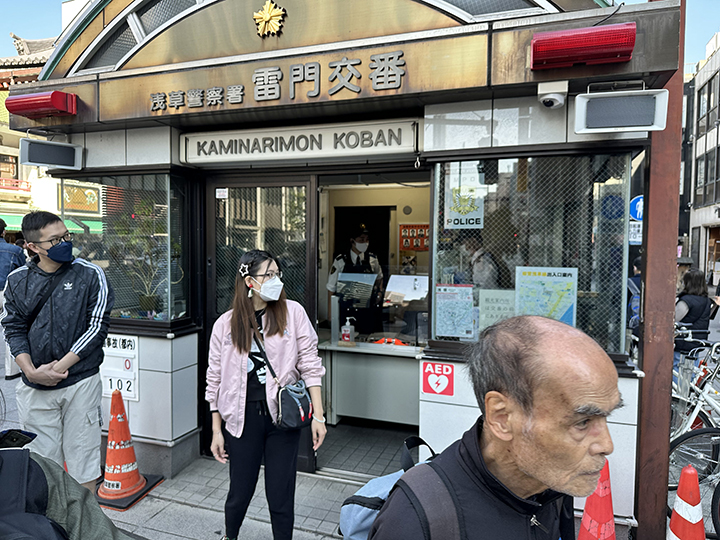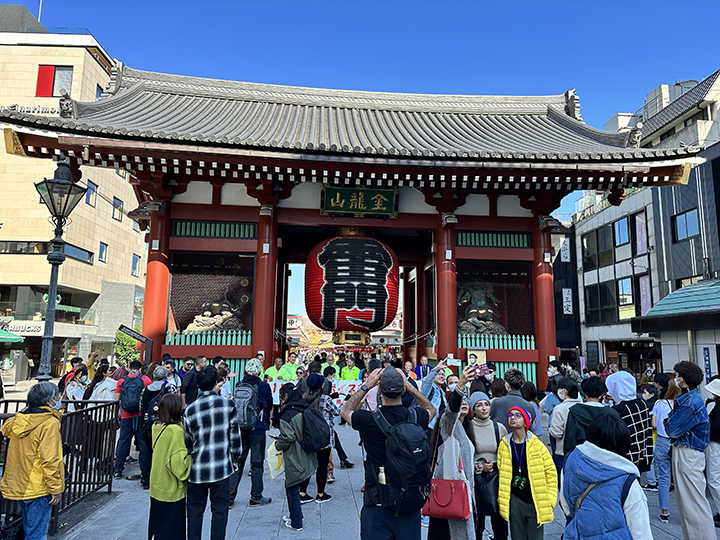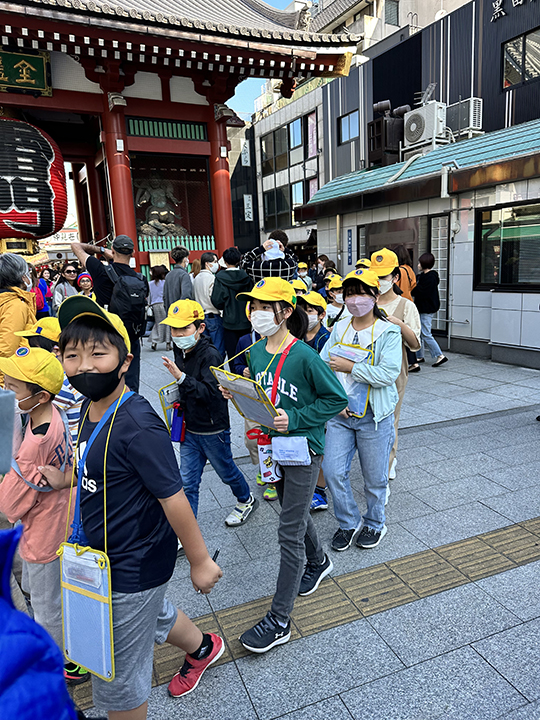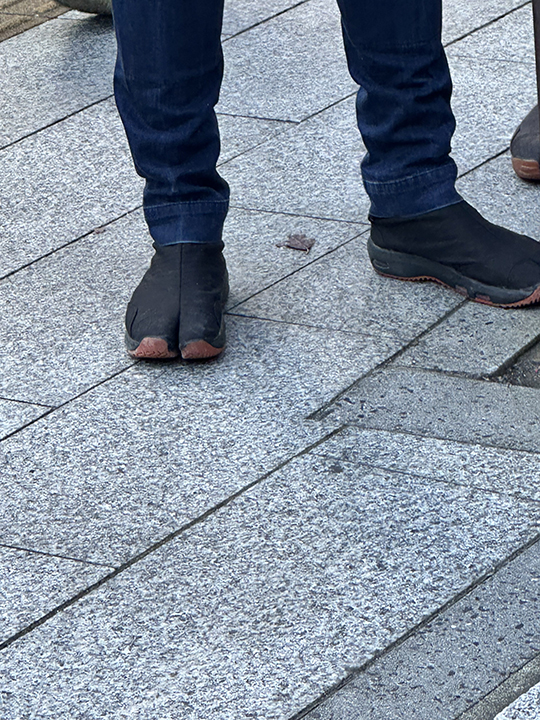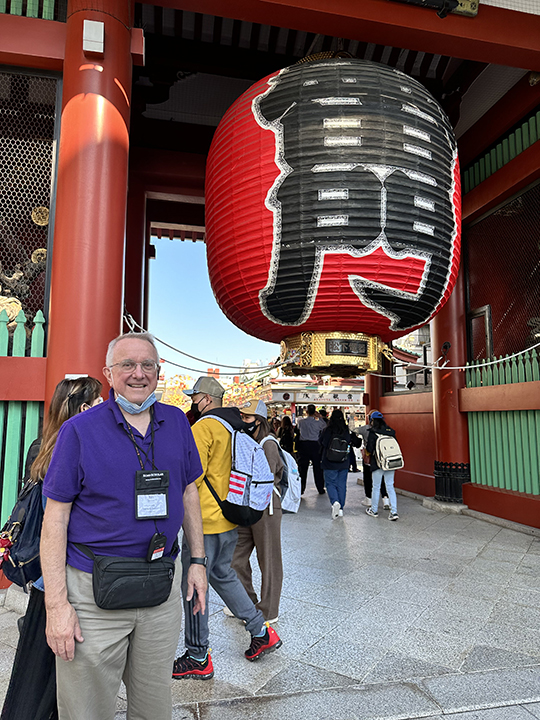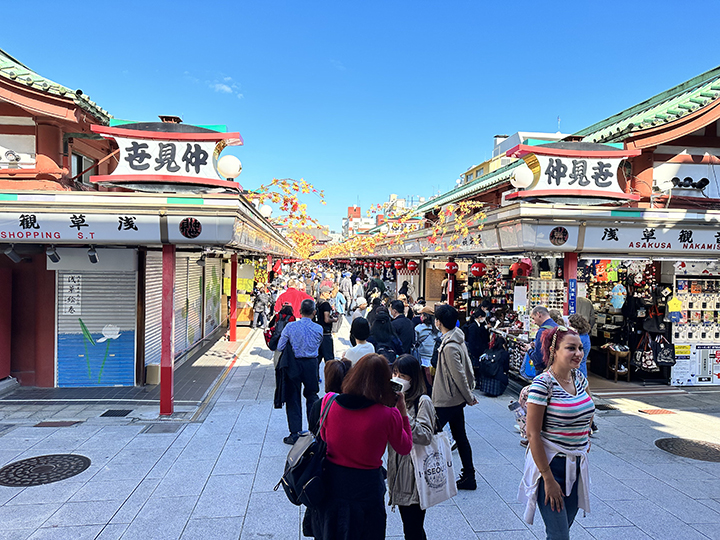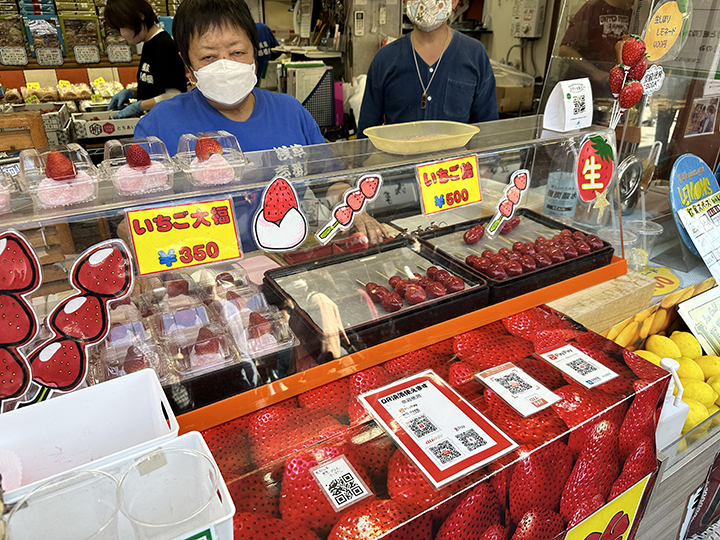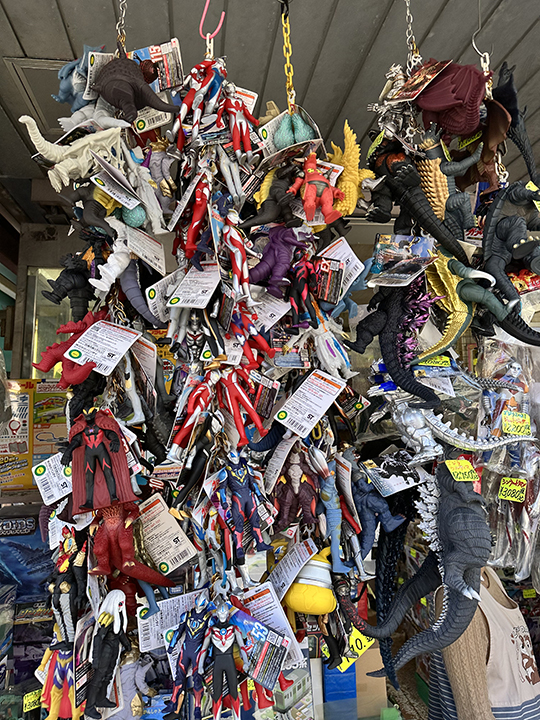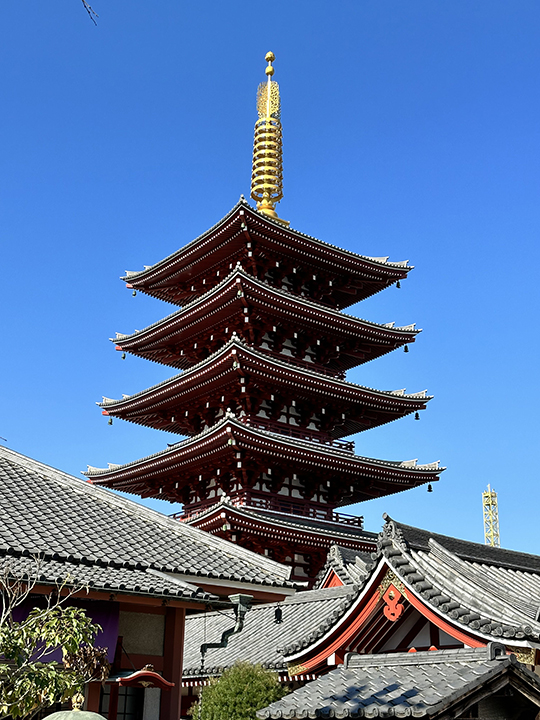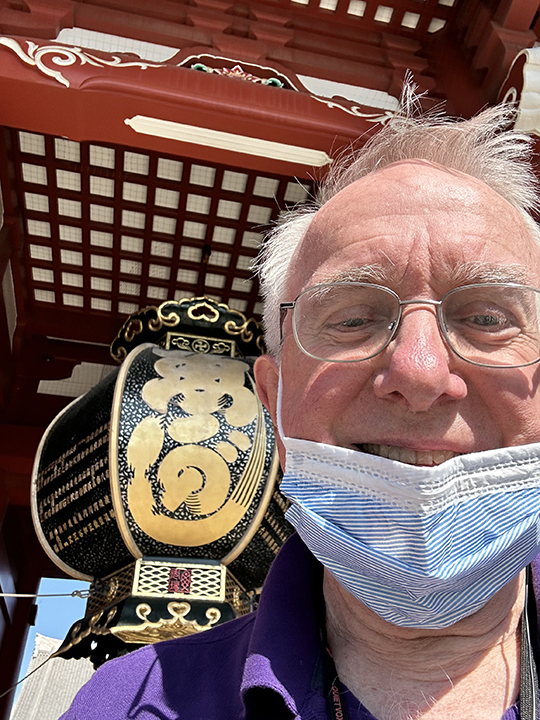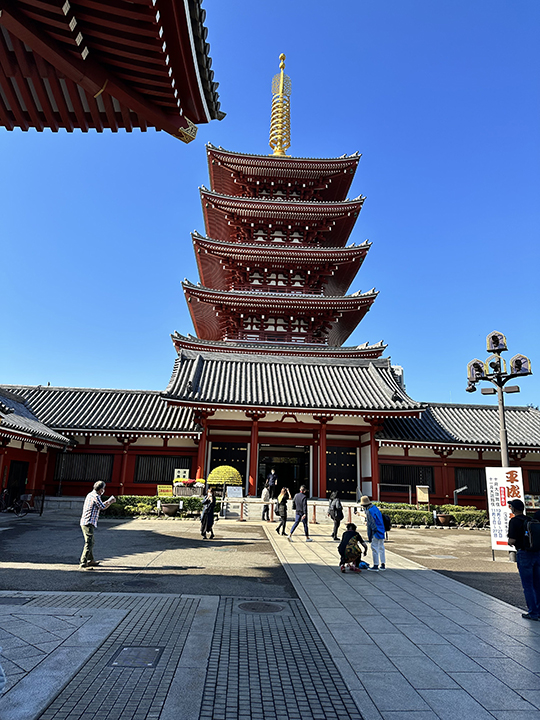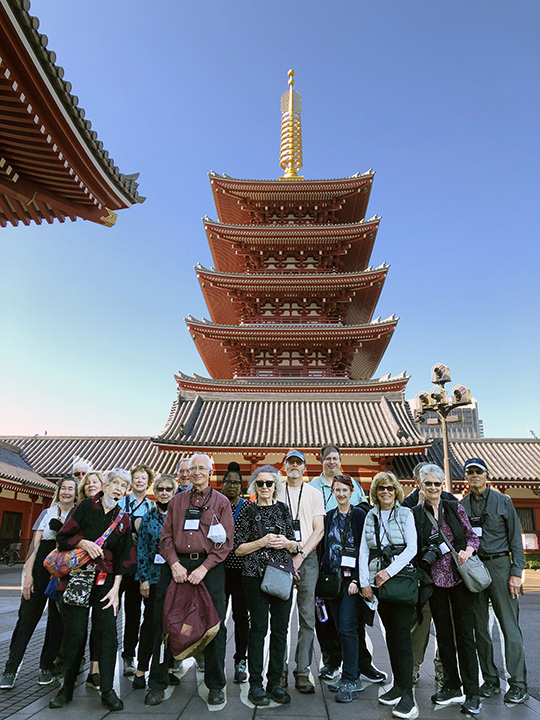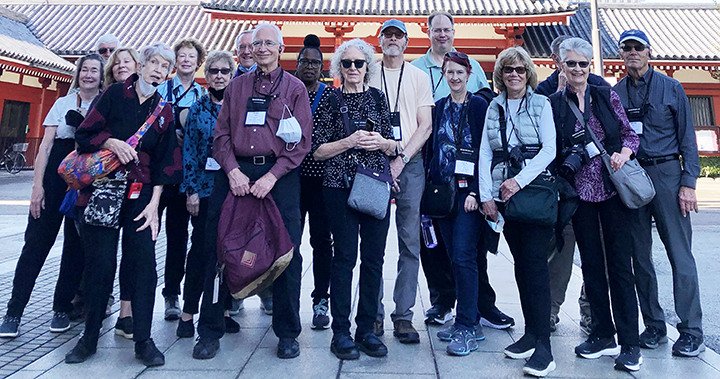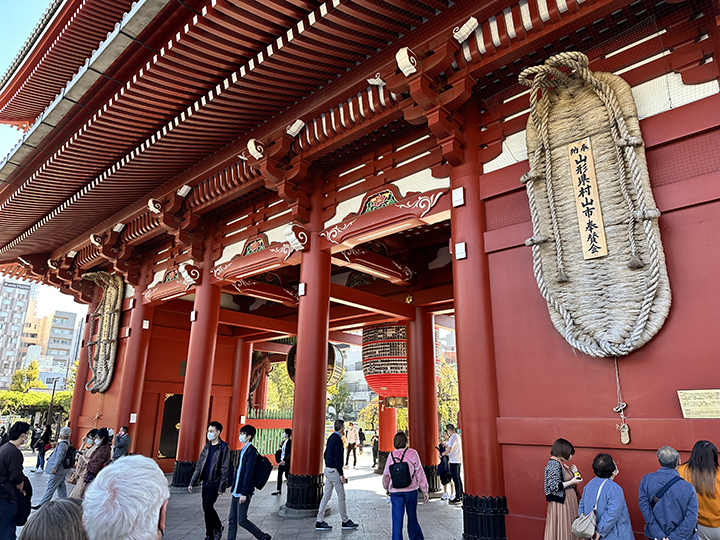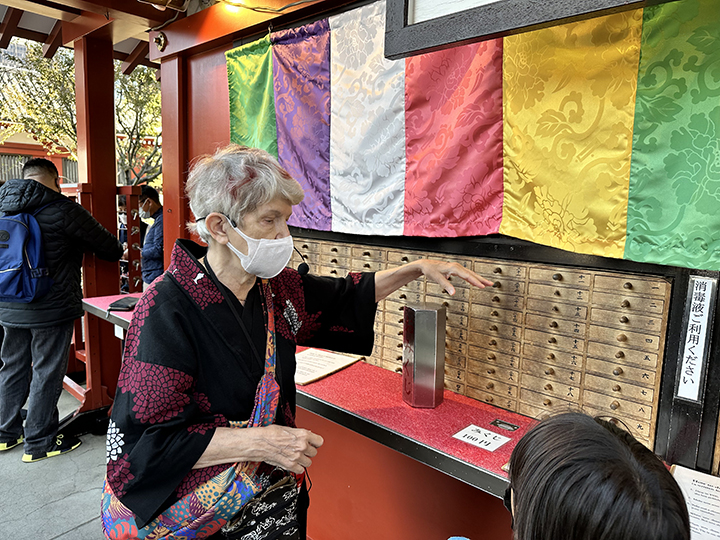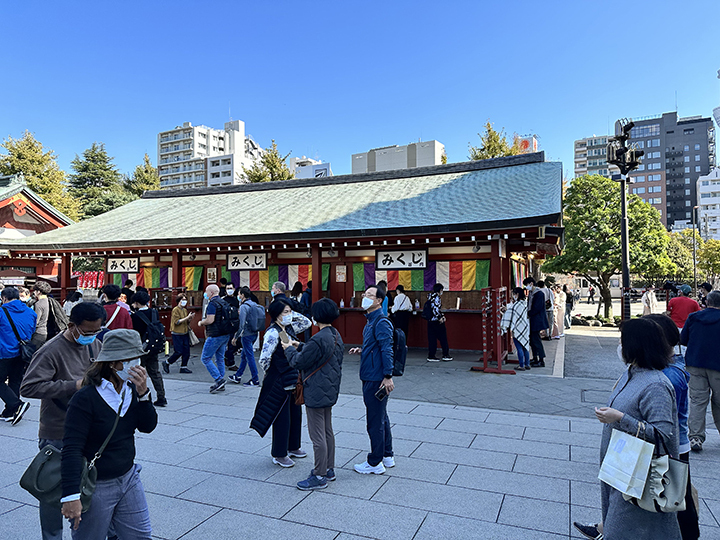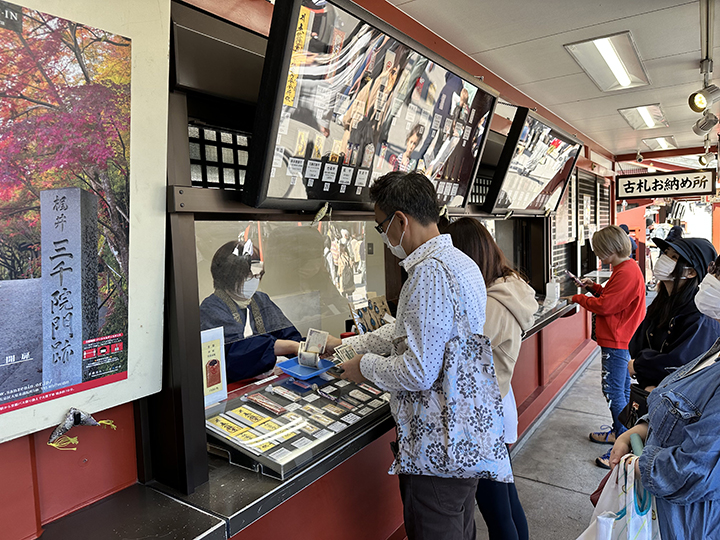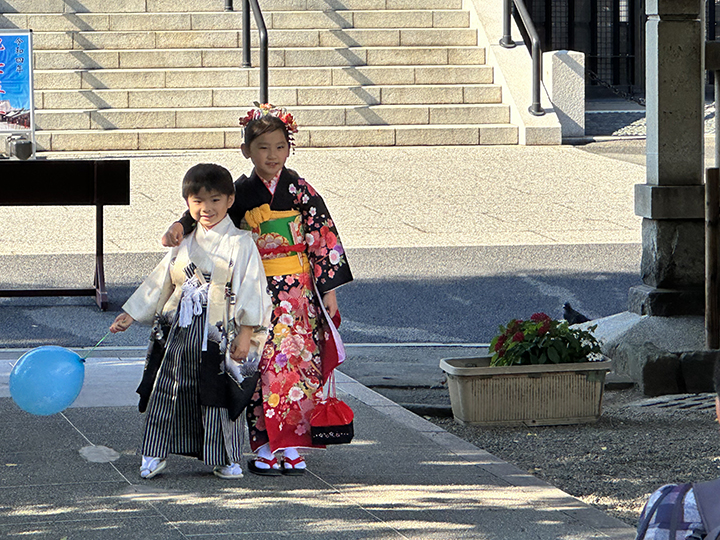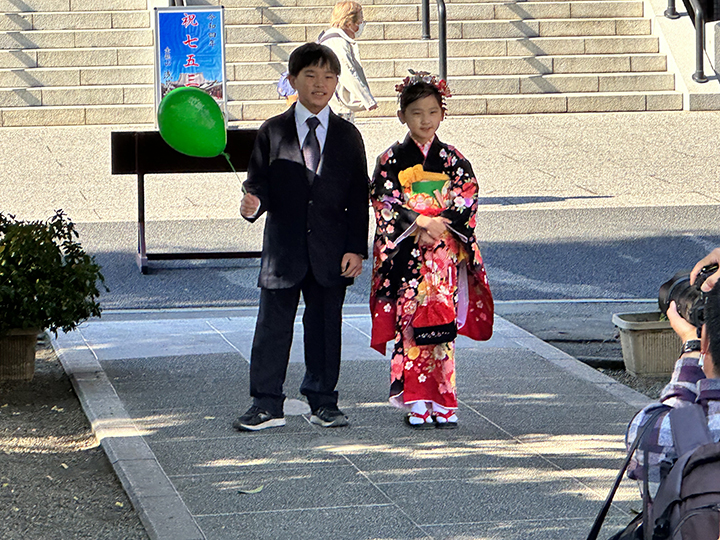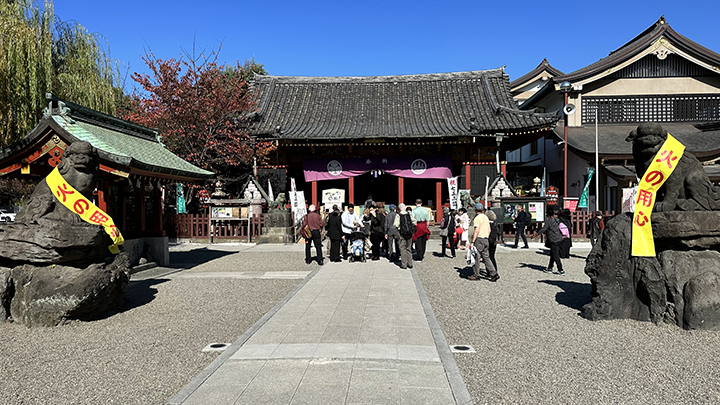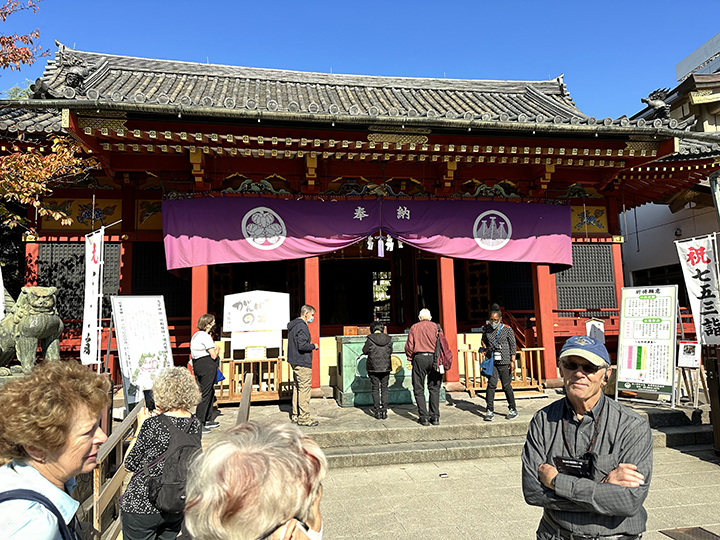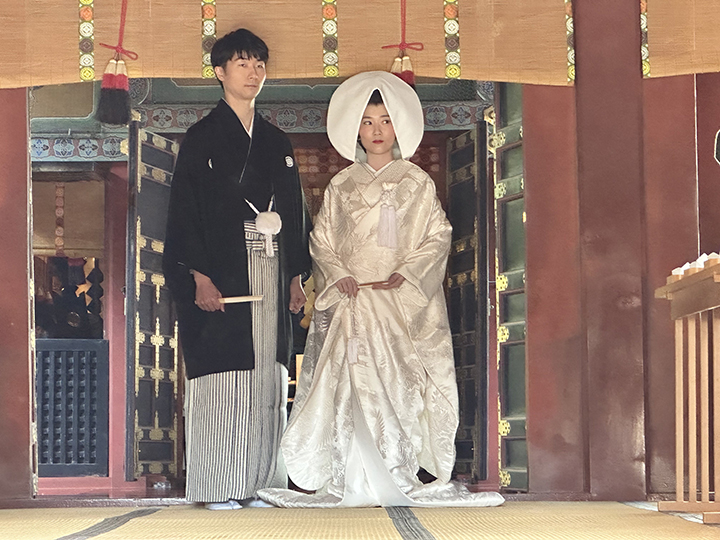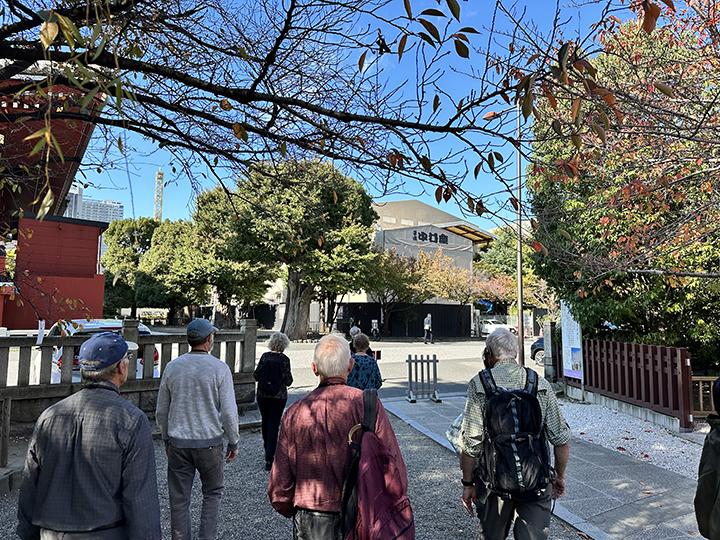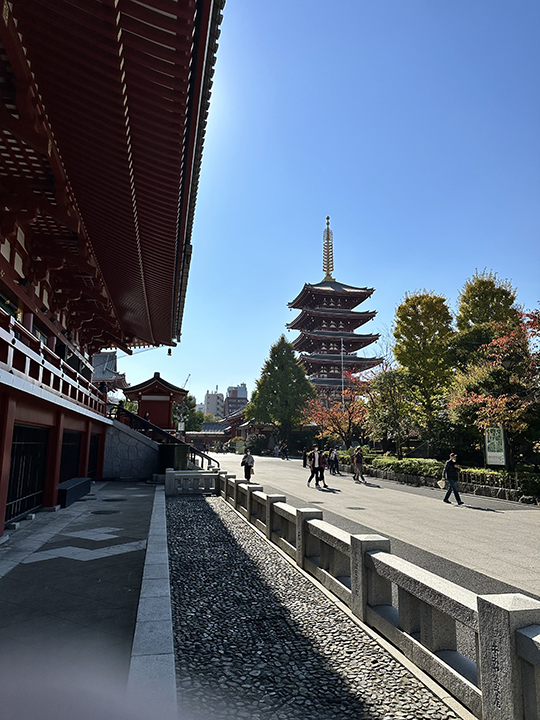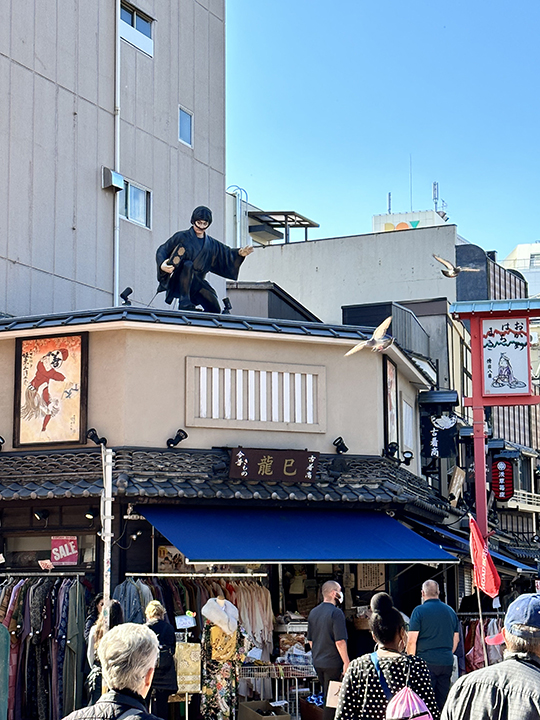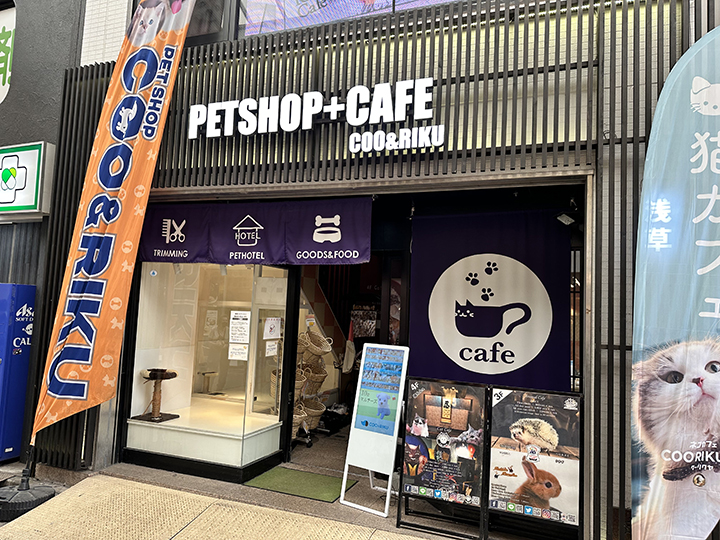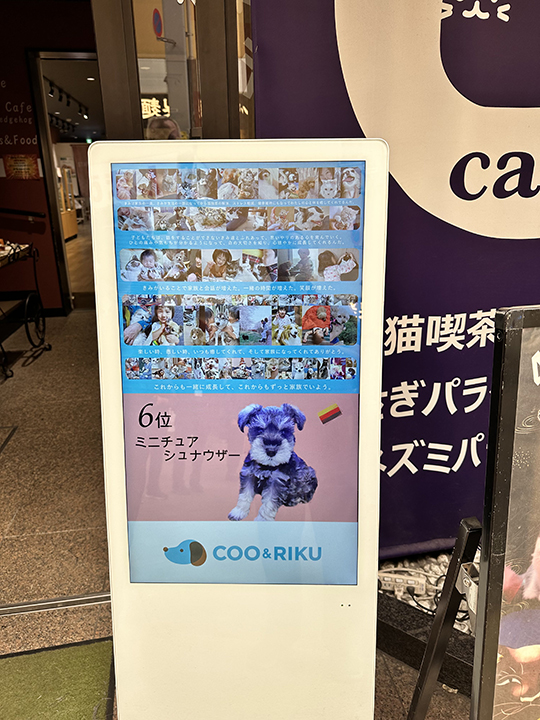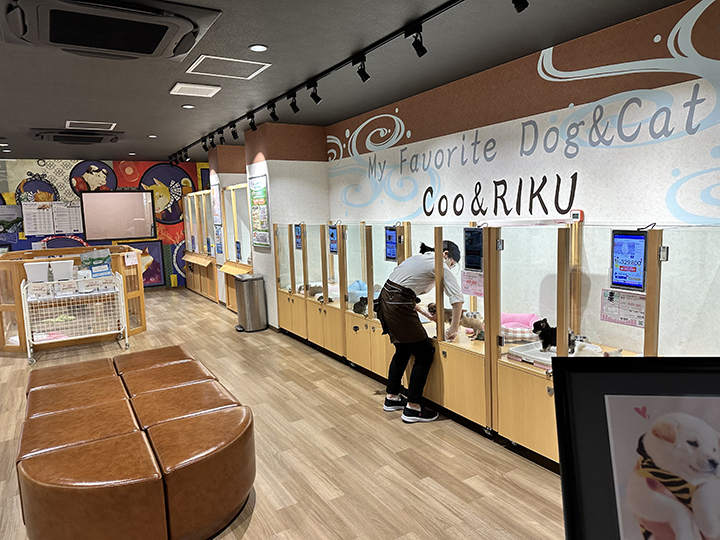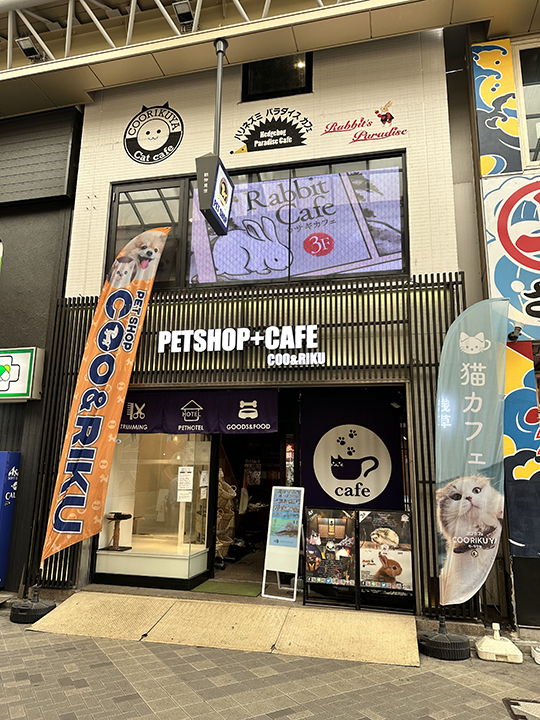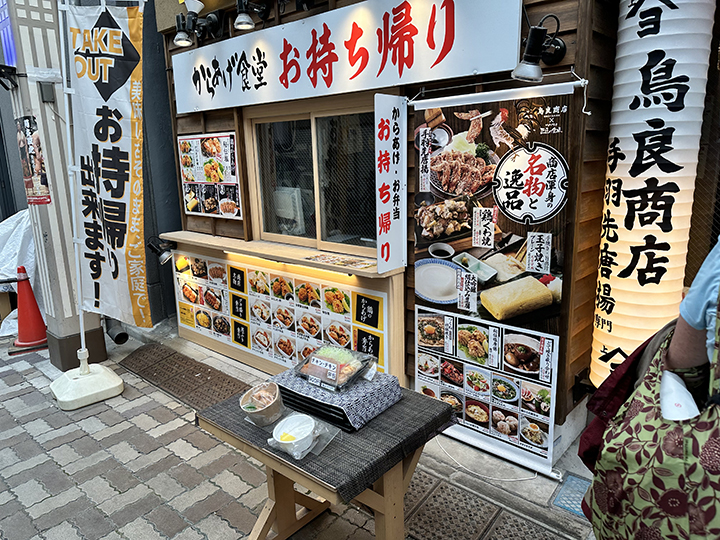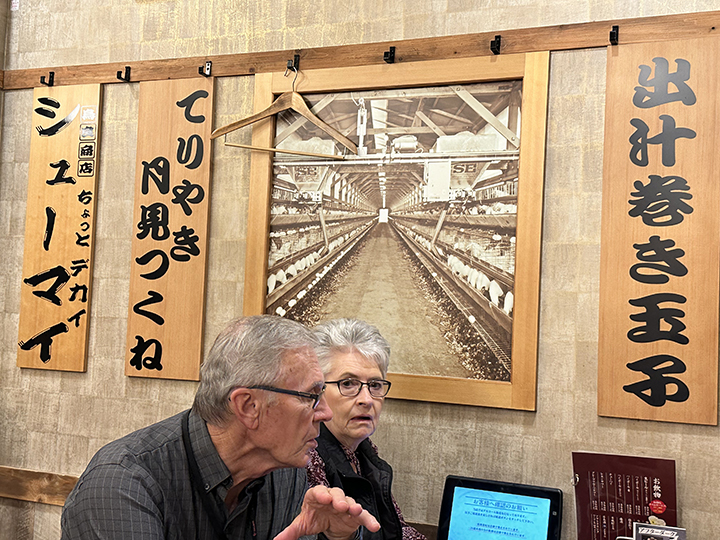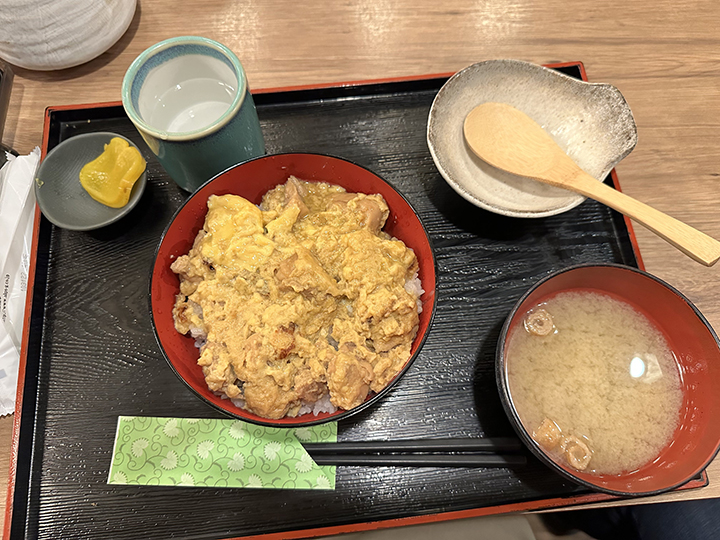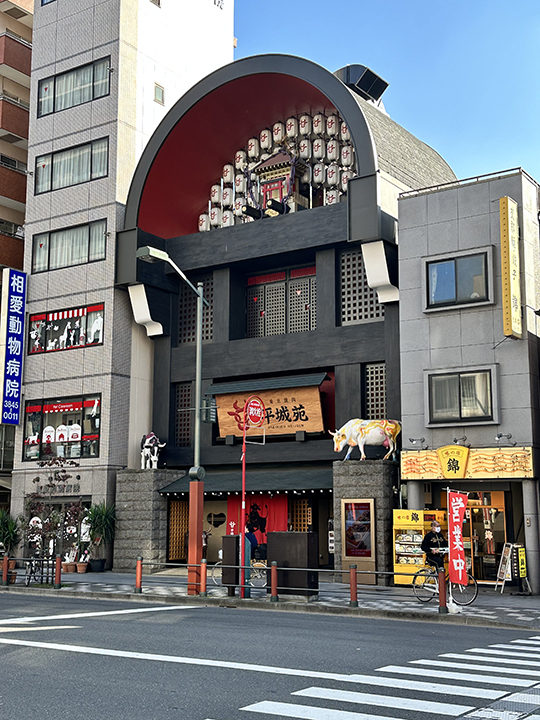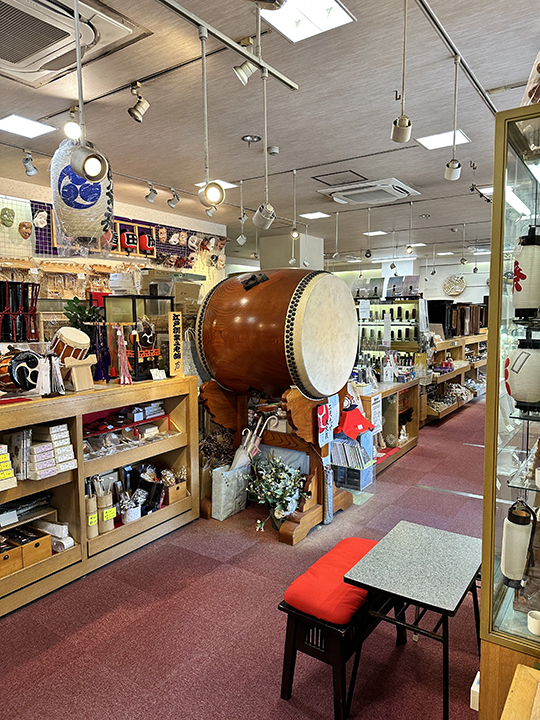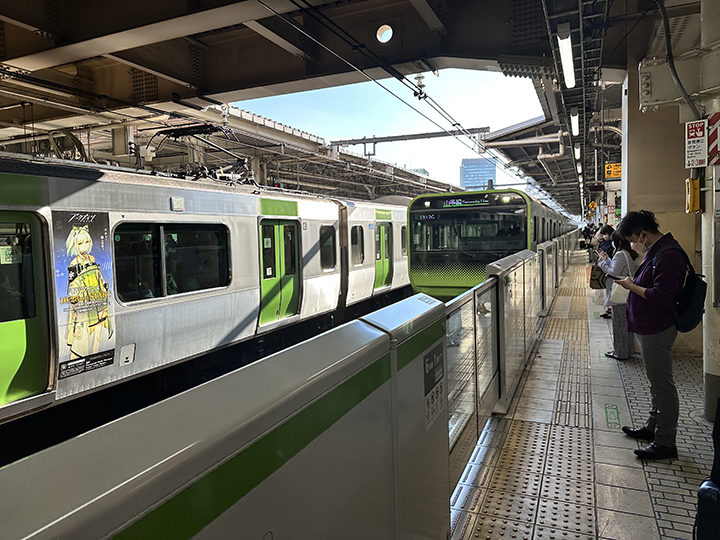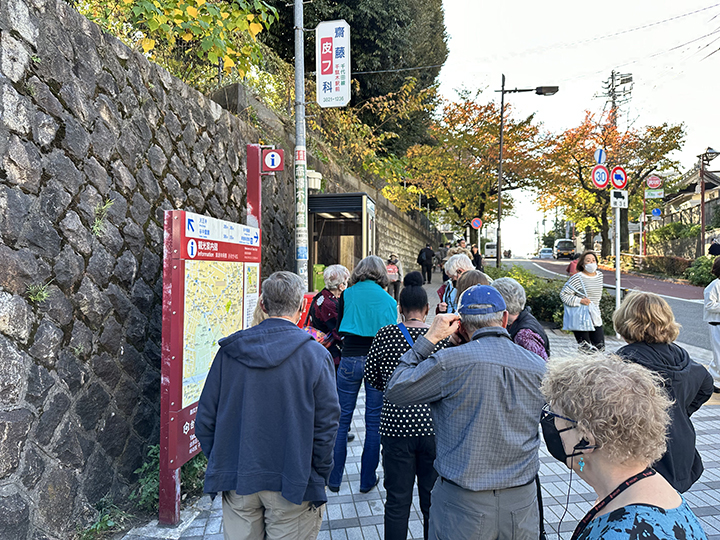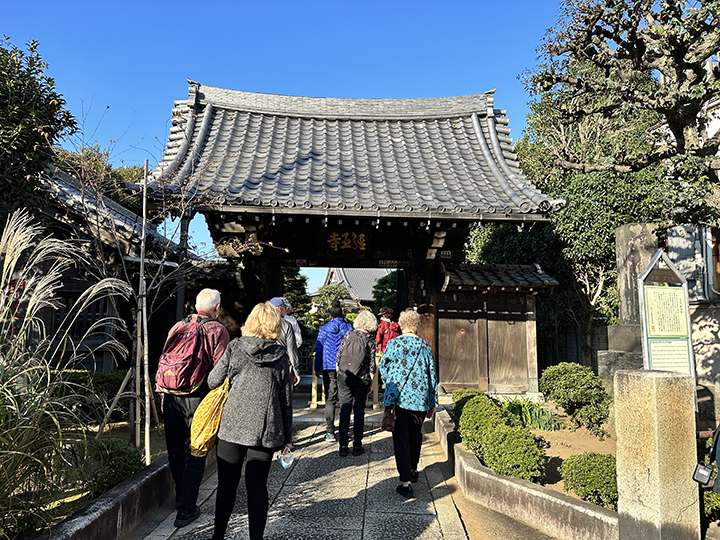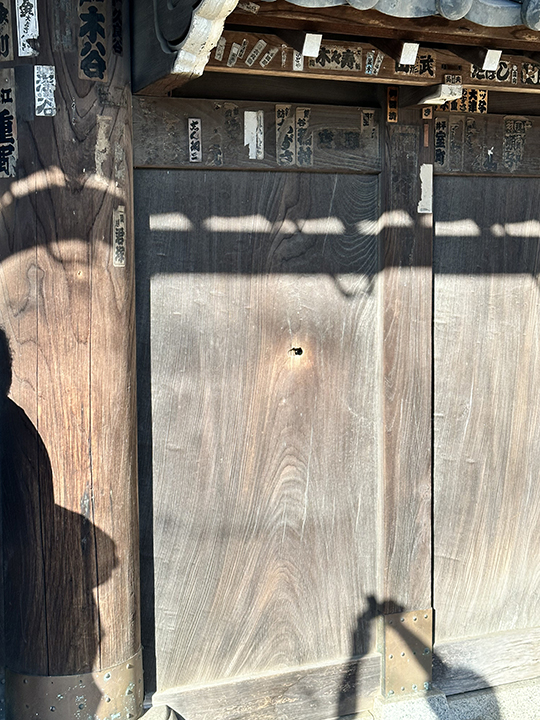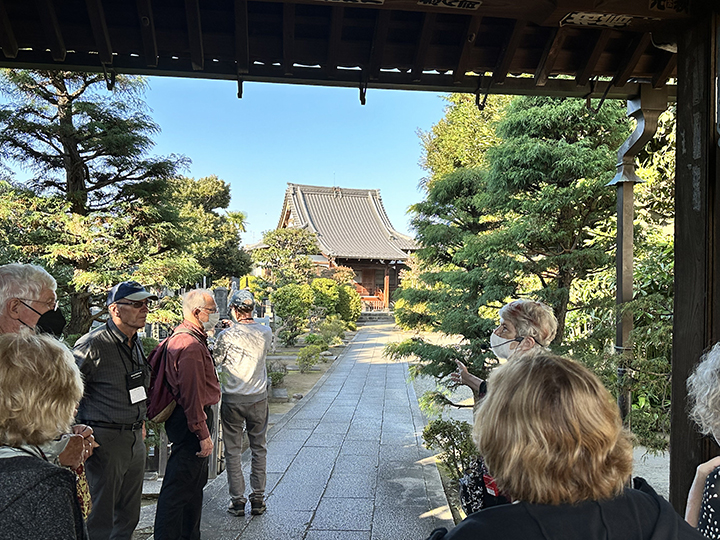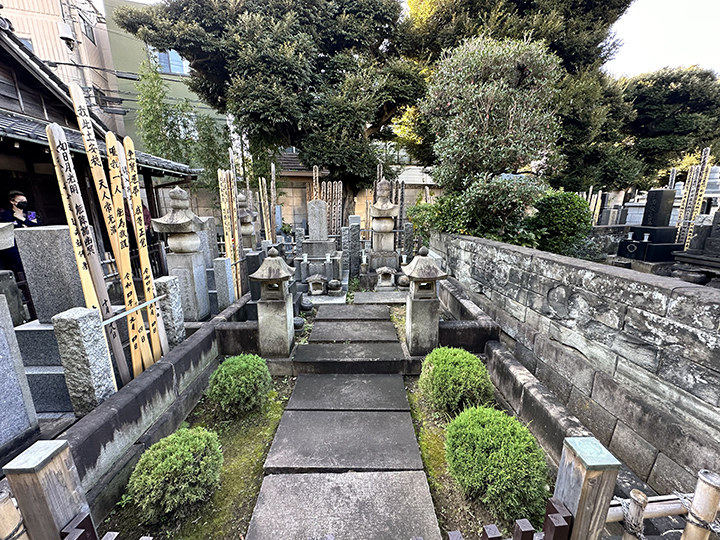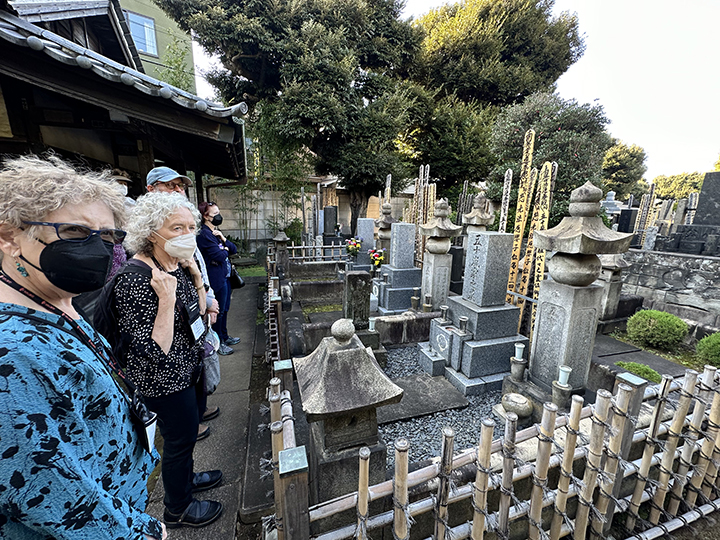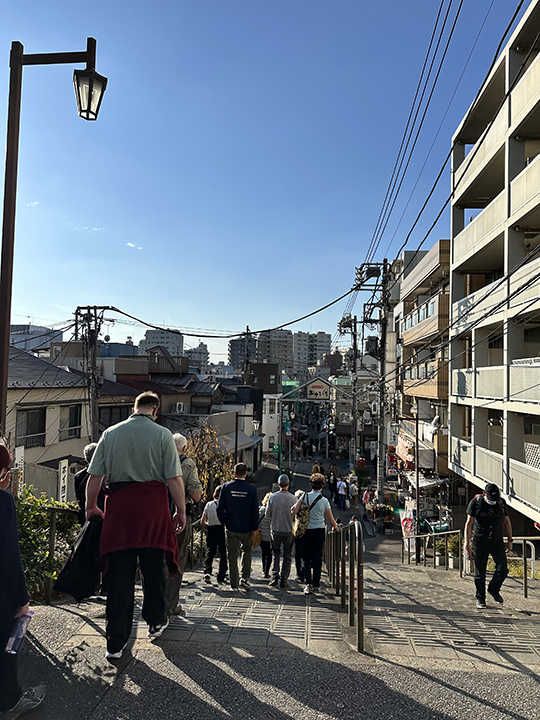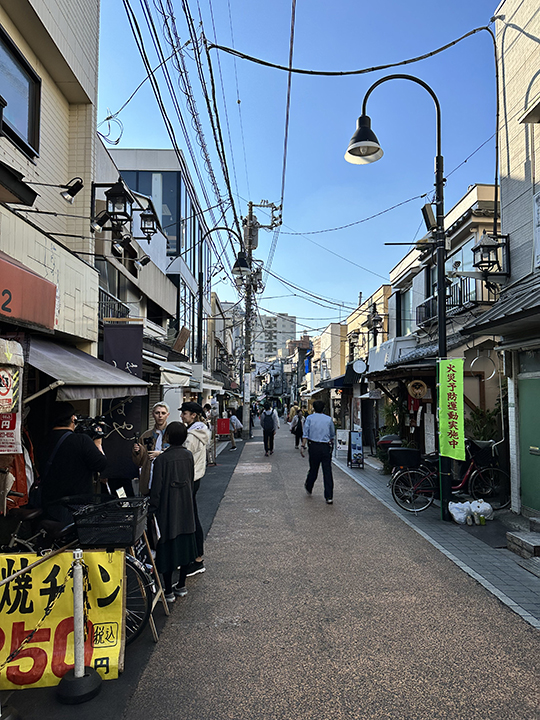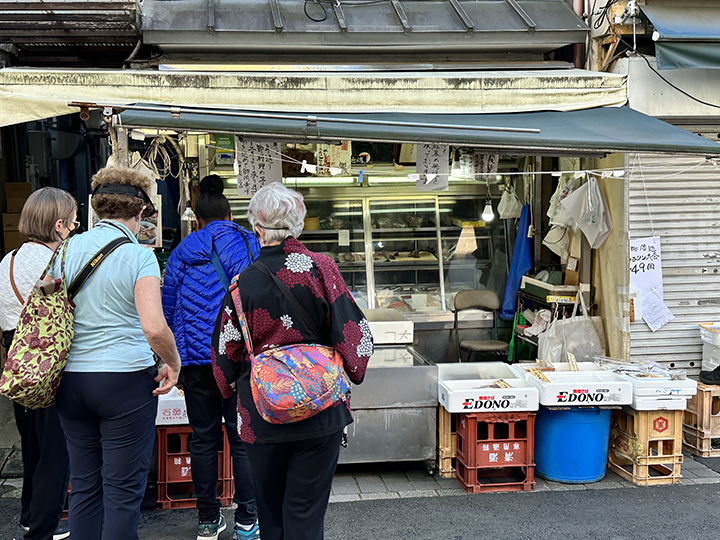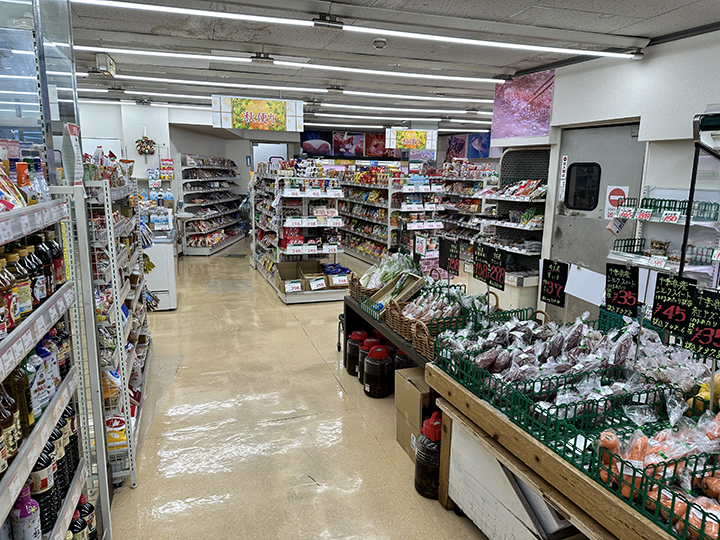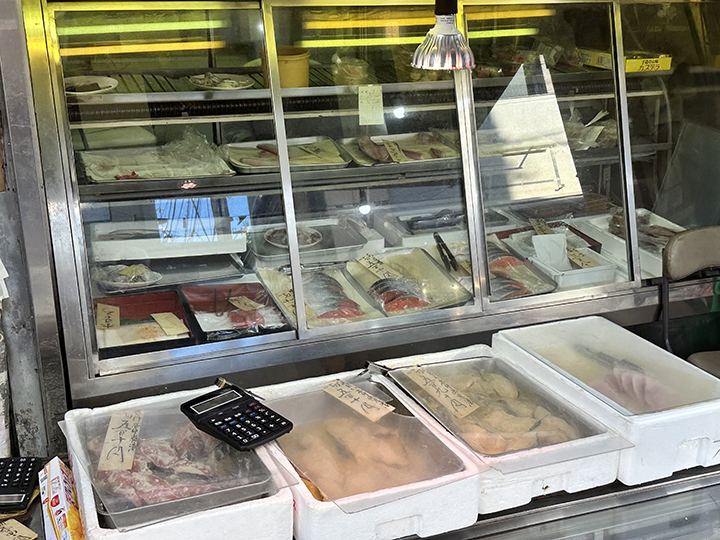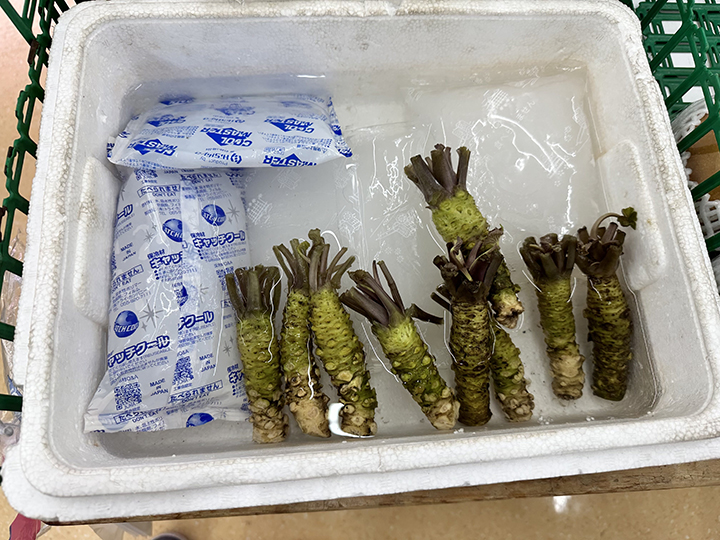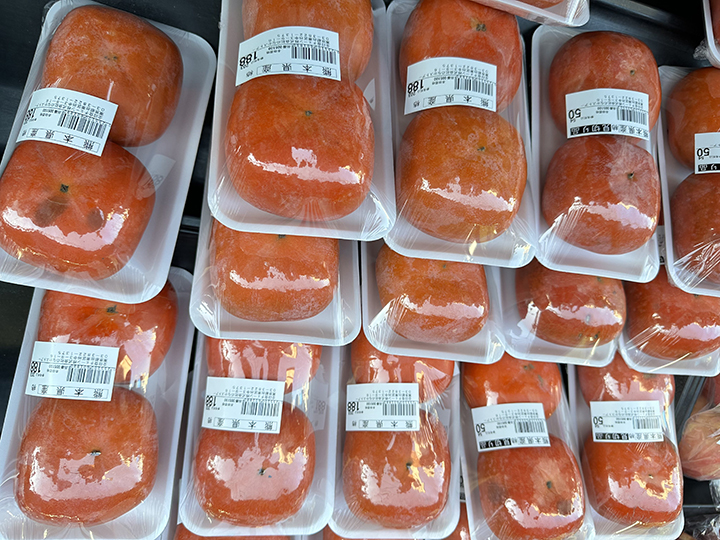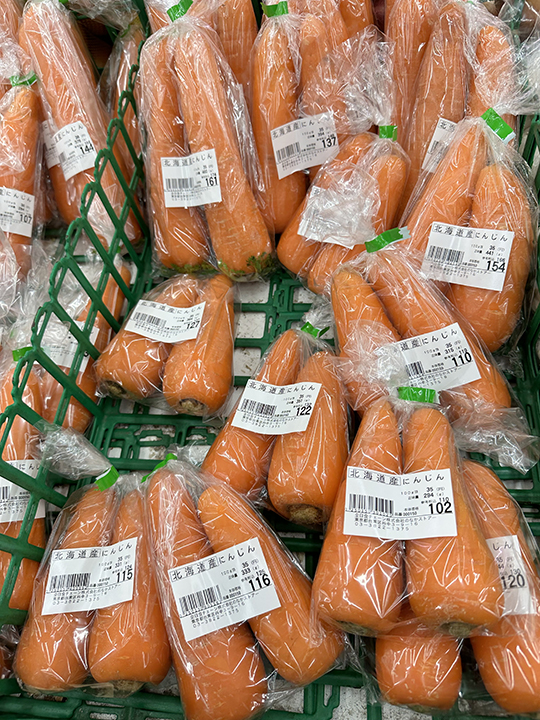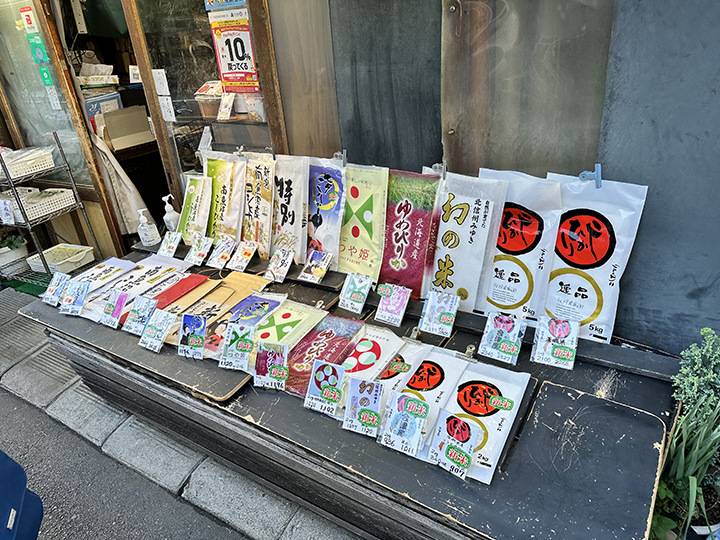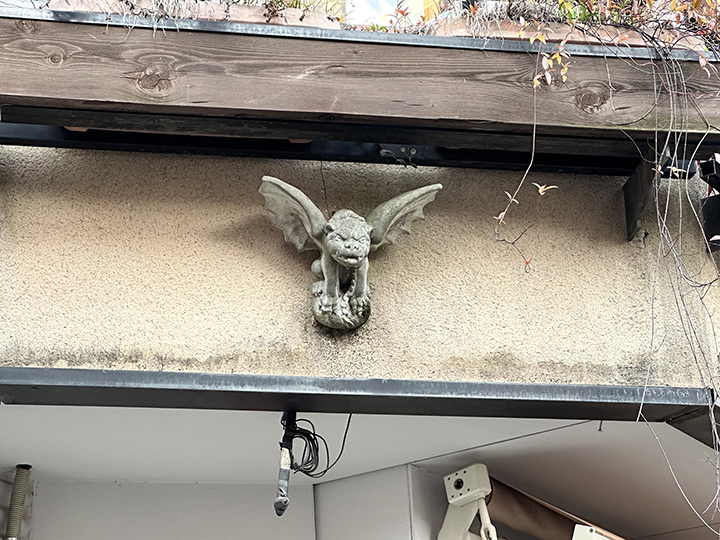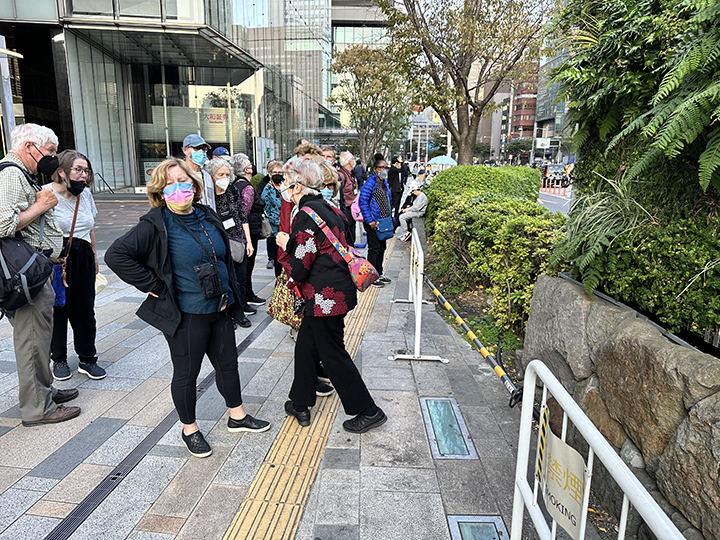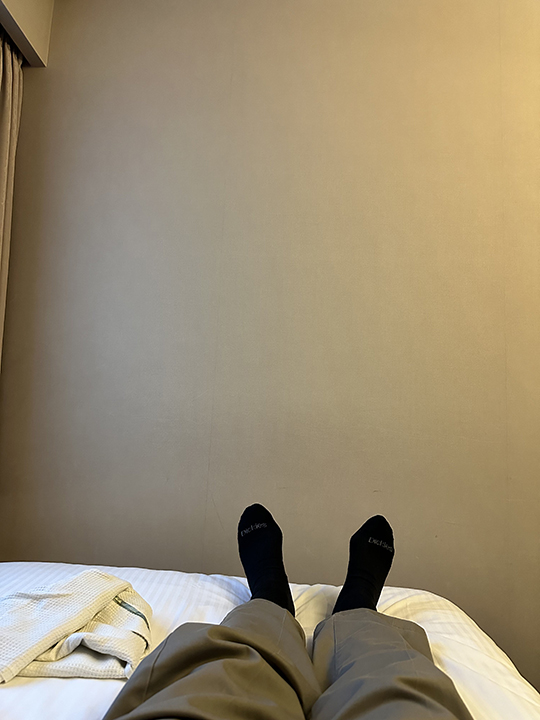|
Today we enjoyed another fine day of exploring Tokyo. And we walked a lot.
Tokyo traffic cops keep the city running smoothly.
But we aren’t driving. We are headed for the subway.
We have all heard horror stories of crowded Tokyo subways, but this wasn’t one of them.
Charley seems not yet to have the hang of it.
Kathleen don't need no stinkin' strap.
I think we've arrived.
We learned the Japanese love public ceremonies and one of their favorite things to do is invite deities to take up residence in miniature shrines so they can be paraded around the neighborhood.
A Mikoshi is a portable miniature shrine carried by the parishioners of a shrine during festivals. It holds the spirit of the deity of that shrine. It is paraded around local areas and signifies the warding off of misfortune and wishing for the happiness of its people. Kathleen said long poles are attached front and back and as many as 100 men carry the thing through the streets. It is very heavy. The Road Scholars are impressed by the portable shrine. They'll see bigger ones later.
That’s a department store over there.
And that is where you can get a hamburger around here.
Well that looks interesting.
There are three things of note here.
Bill thinks this is all very funny.
So does Mary.
Must be something interesting down there.
Colonel Kentucky speaks Japanese!
A rickshaw? I thought they were Chinese, not Japanese. So I have Googled and learned that in fact, for decades, rickshaws were Japan's main mode of transportation because they were cheaper than horse-drawn carriages and cars. Nowadays, the word “rickshaw” refers not only to the traditional human-powered carriage, but also to any other carriages similar in appearance, be they electric or motorized. And tourists like to ride in them. Jinrikisha (Rickshaw) 1. A wheeled vehicle that carries one or two persons, pulled by a human being. 2. The job of pulling a jinrikisha is called shafu. And now you know.
Tokyo is noted for its friendly neighborhood police stations. This one is mostly used to provide tourist information.
This is the Senso-ji Buddhist temple. Note the two creatures on either side guarding the gate. Buddhist temples always have two creatures guarding the entranceway. Except when they don’t.
Kids. Lotsa kids. They seem to get more field trip days than we used to.
Hey look! The workmen around here wear funny shoes too.
Bill is impressed by this place.
Kaori explained to me that the monks allow merchants to line the approach to the temple because they will naturally keep everything spic and span to impress possible customers.
Spic and span...see?
And maybe a little jumbled.
It is quite a market.
The temple is located here because according to legend this area was once a river and two fishermen found a precious small figurine of a deity dedicated to compassion. They took it to a wise man who turned his home into a Buddhist temple to honor the figurine. And it has all grown into what we see today!
The Road Scholars are taking it all in.
An impressive temple.
With a gorgeous pagoda.
The Road Scholars are heading in.
Bill, are you going to wear that mask or not?
This looks like a good place for a group picture.
C'mon everybody, let your faces be seen.
I think that's Don back there on the left, but who's behind Vicki? Charley, is that you?
Those giant sandals are intended to deter evil deities from entering. When they take one look at those sandals they realize there must be a giant Buddha inside and they want no part of him.
One great thing about this temple is that you can get your
fortune told.
Kathleen and some kids are showing how it works. Can you hear the clanking of the fortune sticks as they are shaken inside the metal boxes?
I'm not sure I buy into all that.
And I resisted the temptation to buy a lucky amulet. But lots of people seem to put a lot of stock in them.
There are little stands where you can cleanse yourself with water and bathe yourself in incense before entering the temple. It's always nice to smell clean and fresh.
Some people really get into it. I think the guy at the end may have been performing for the camera.
Here's the view from the top of the steps.
The Road Scholars seem impressed.
And why not? This is pretty impressive.
Aww. Daycare kids in pink out for a stroll at the temple.
Here's something we'd see several times
on this trip.
Shichi-Go-San (lit. 'seven-five-three') is a traditional
Japanese rite of passage and festival day for three- and seven-year-old girls,
five-year-old and sometimes three-year-old boys, held annually on November 15 to
celebrate the growth and well-being of young children. As it is not a national
holiday, it is generally observed on the nearest weekend.
So Bill took pictures of children.
At least they didn't make the little guy wear funny shoes.
But wait, there's more!
Somebody is getting married inside.
A Japanese couple in traditional dress on their wedding day. Do you know why the bride wears that thing on her head? It’s because, as you are probably aware, when women get angry they grow horns out of their head. You wouldn’t want to see a woman’s horns on her wedding day would you? With this picture Bill's new iPhone 14 proved its value. It was dark in there; looking in from out in the sunshine you couldn't really see much of anything. But when the camera zoomed into the darkness it automatically adjusted and voila!
Somebody said there was a kabuki or maybe noh performance taking place in that building over there. We didn't see any performances of anything on this trip, probably, I'm guessing, and this is just my opinion which could be wrong, but maybe that's because Japanese theater performances are notoriously long and we Road Scholars would probably get bored after 20 minutes. Maybe. I dunno. But we saw no noh on this trip.
Instead we took a break and sat for awhile on whatever we could find to sit on.
Don thought he was buying a cold bottle of tea from a vending machine but he didn't realize that when you choose one of the red buttons you get hot items. He gave his hot tea to Bill who tried his best but this was no time for anything hot. Next time use a blue button, Don.
Here's a shopping area complete with a ninja on the roof.
Oh look! Several Road Scholars had heard about these places.
It's a pet cafe.
People who live in apartments too small to accommodate pets can come here and cuddle a cat while sipping coffee.
The Japanese think of everything.
This is where we are having lunch. It’s kind of a free range chicken place.
Brian and Vicki are enjoying the ambience.
We are having oyako-don, which is chicken and egg on rice. Literally translated, oyako-don means parent and child. Get it? Chicken and egg -- parent and child? Get it?
This is a grilled steak restaurant, very expensive, sort of like a Japanese Capitol Grill. The building to its left is a veterinary hospital. Make of that whatever you like.
A shopping mall.
Apparently big drums are a big deal in Japan. In Japanese, taiko literally means "drum," though the term has also come to refer to the art of Japanese drumming, also known as kumi-daiko. Taiko has been a part of the Japanese culture for centuries. Centuries ago, taiko was used predominantly in the military arena. As it evolved, Japanese Buddhist and Shinto religions gradually began to take it on as a sacred instrument. Historically, it has existed in a multitude of other environments, including agrarian, theater, and the imperial court. The art of kumi-daiko, performance as an ensemble, originated post-war in Showa 26 (1951). It was created by Daihachi Oguchi, a jazz drummer who serendipitously stumbled across an old piece of taiko music. Wondering why taiko were never played together, he broke with tradition by forming a taiko drum ensemble. More recently, taiko has enjoyed not only a resurgence of interest in Japan, where there are over 4,000 taiko ensembles, but also transplantation and evolution in North America.
I have an idea! Let's take a train to another temple!
After a ride by rail we have arrived at the Yanaka neighborhood, the part of Tokyo that best represents what the city was like before fire bombings.
We have arrived at the Daikokuten Kyoo-ji temple. Kyoo-ji is a Nichiren Buddhist temple. It is said that Kammuri Katsuhei, a local wealthy farmer, leader of Nippori Village, and ancestor of the Kammuri Gonshiro family, donated land in 1655 for the priest Yosen' in Nikkei, and the temple was built upon it. A statue of Daikokuten (Mahakaala, one of the Seven Lucky Gods, is enshrined in Kaikokudo Hall, located next to the main hall. Said to be the work of Nichiren, the statue has been venerated by the local people as a guardian deity.
The main gate is a designated tangible cultural property of Arakawa City. In 1868 the fleeing Shogitai troops took refuge at the temple until they came under fire from the Imperial Army at the basttle of Ueno. To this day, bullet holes in the gate remain as a result of the conflict. That black spot is a bullet hole from a US Army surplus Gatling gun. This was just after the American Civil War.
Now let's look around.
Buddhists cremate dead bodies rather than bury them. But they still have cemeteries like this to honor the dead. Urns filled with ashes are placed by headstones where they are honored until another family member needs the spot and the current urn gets buried.
Those sticks with Japanese characters name the deceased.
Now let’s go see old Tokyo. The original name of the city was Edo.
Modern Tokyo is tidy and orderly. This almost reminds me of streets in India, if they were tidy and orderly.
Let's look around a neighborhood grocery store.
Looks like they have a nice selection.
There's a fish counter with some kind of fishes.
Have you ever seen raw wasabi? Well there it is.
Must be persimmon season in Japan.
Those are some hefty carrots.
More seafoody stuff. I see some clams anyway.
And some of the rest will remain a mystery to me.
Which is the bigger concern: being watched over by closed circuit TV or by a gargoyle?
A very artistic mailbox.
We're almost home and Kathleen has found the remnants of a moat wall to show us.
She explained that little orange building among the high-rises is there because the owner absolutely refused to sell. It's a pawn shop, i think.
I am pooped.
|


